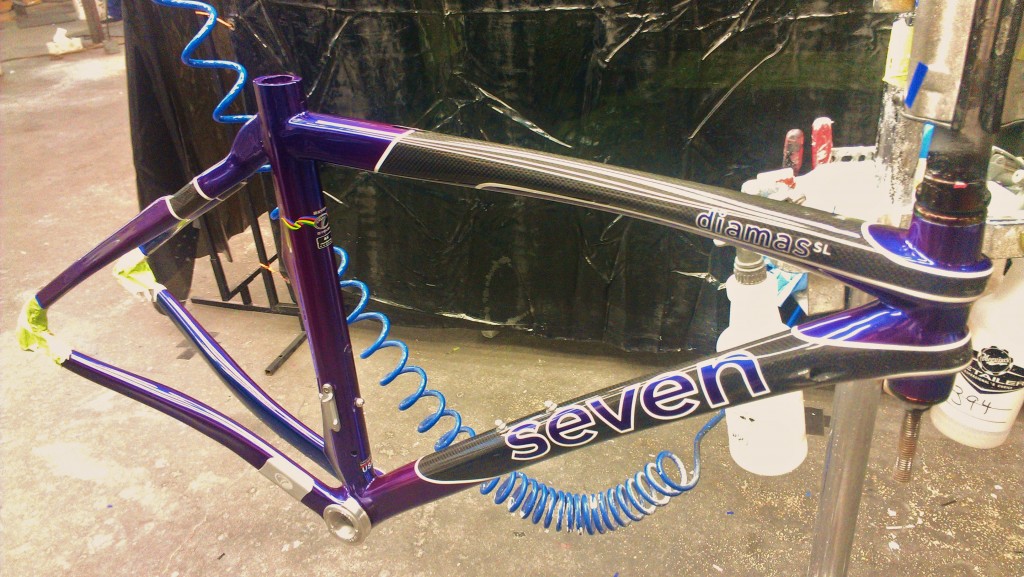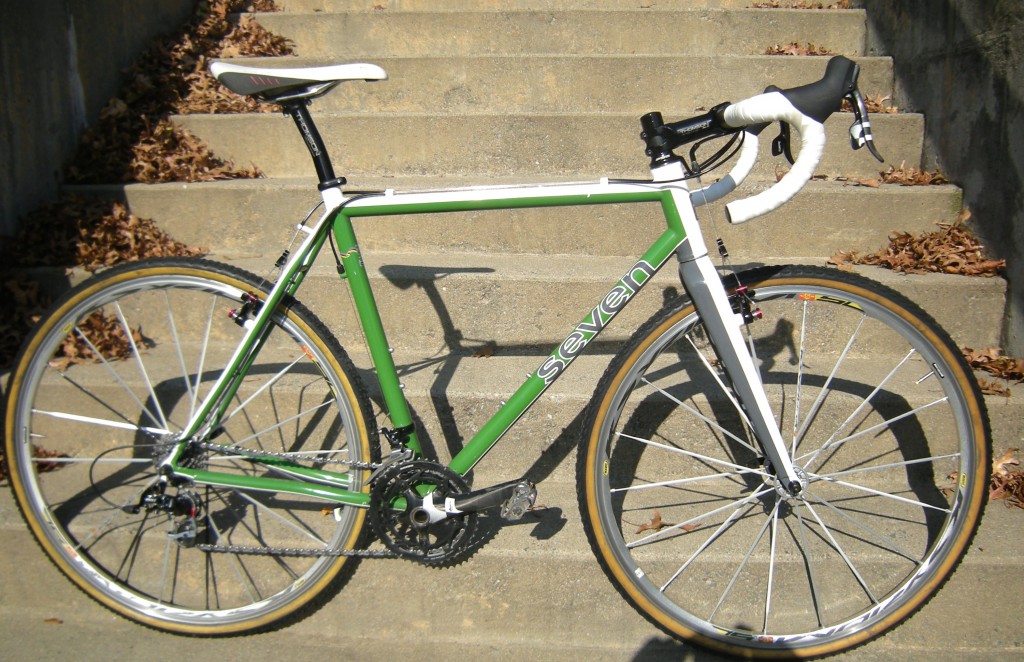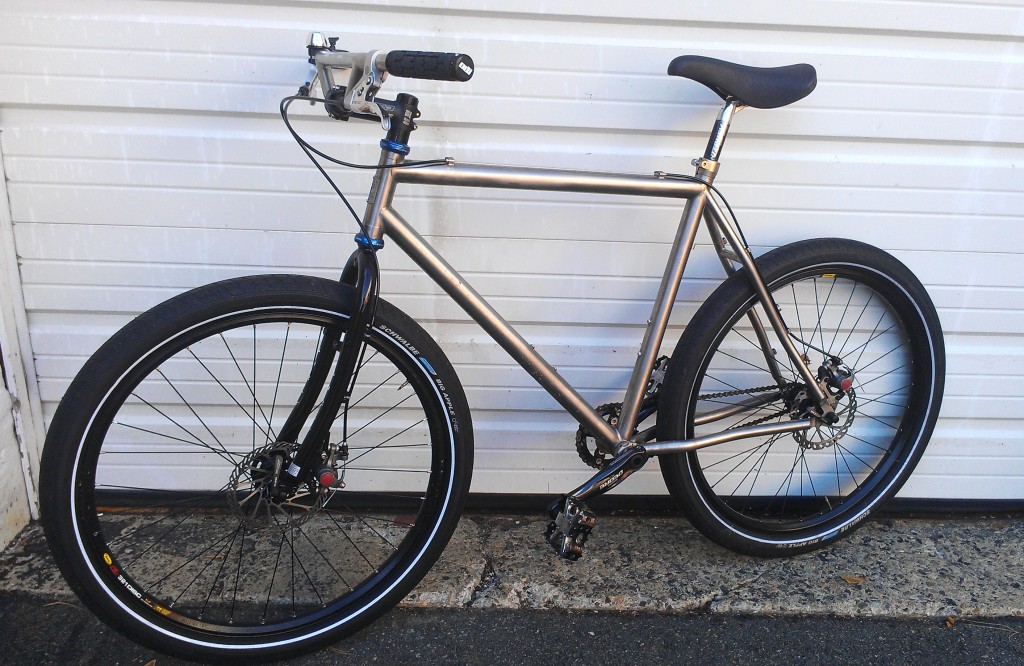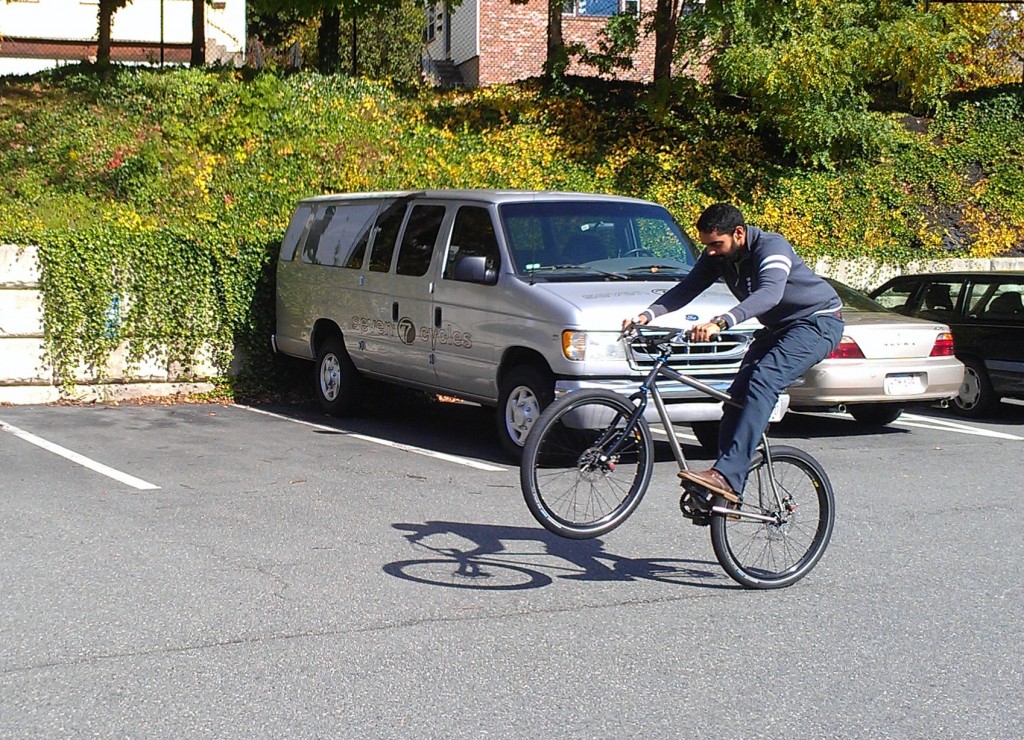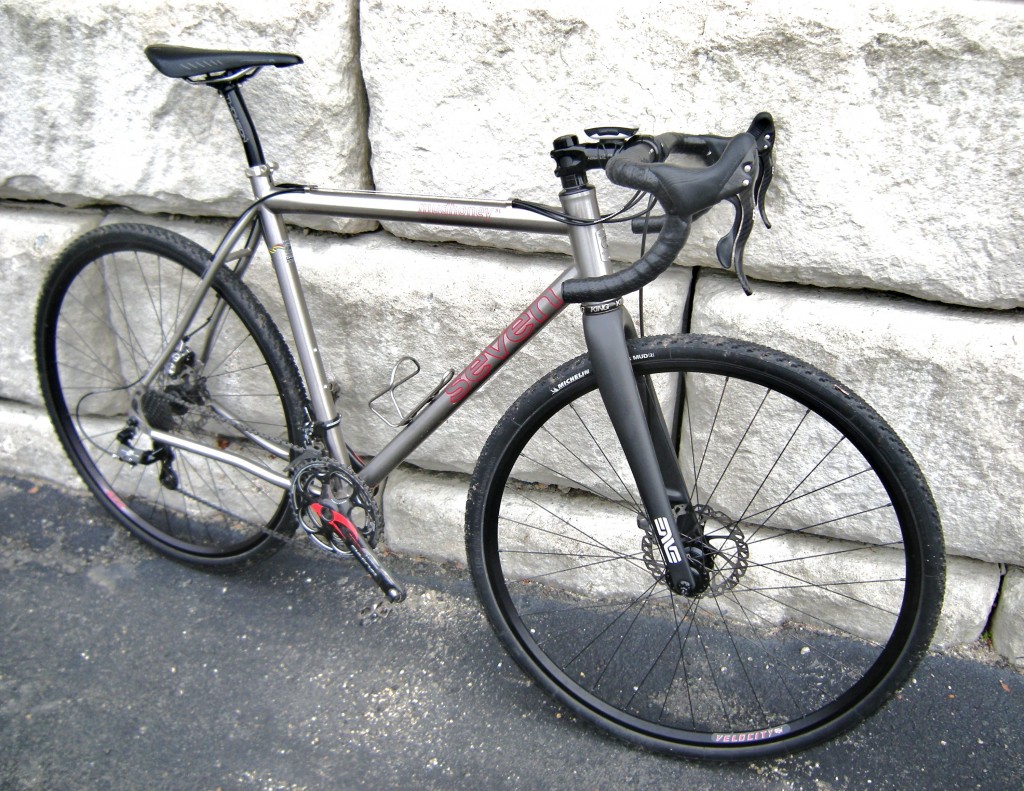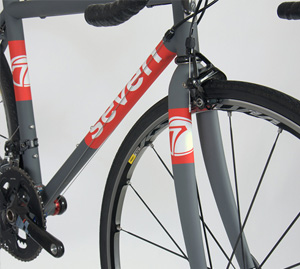This Diamas SL takes advantage of our new, stock Royal Flush paint, but leaves some windows so the bare carbon weave can show through. Custom decals finish out the look.
Tag: Bike Build
Dan’s Steel Mudhoney
This is Dan’s new, steel Mudhoney with a paint scheme he designed himself and we liked so much we made it one of our standard offerings. We call it ‘Antsy,’ because once this frame got to the paint team, Dan checked in on it every fifteen minutes or so until it was done.
It is safe to say Dan is the fastest guy in the building, and he built this bike to race, not just to embarrass us all on the regular Wednesday night Battle Path ride. The basic idea here was to build a light steel racer he could go hard on during the season, but would keep on the road year round. The 44mm head tube and integrated head set give the bike a modern look, and the paint feeds that same vibe.
So this is really a balance of traditional materials and design with a more contemporary aesthetic. The geometry is “American cross,” with a lower bottom bracket and slacker head tube angle. The paint scheme says, “I’m probably faster than you.” And he is.
Stripped Down
You would never design a whole bike build around a handlebar, except for those rare instances where someone hands you a Ti riser bar and leaves you to think about what its best use might be. This is another one of Neil’s projects, and the bar in question wasn’t so much the inspiration for the build, but rather the final piece of a puzzle that had been assembling itself somewhere in the dark recesses of his brain for some time.
He had the frame, acquired at a Seven employee auction a few years back. It had a short life as his every day mountain bike, but he found the geometry left him more upright than he liked to be over root and rock here in our New England woods, so it was in his “parts bin.”
Neil’s parts bin is like most people’s garage, just to paint you a picture.
There was also a Forward Components Eccentric Bottom Bracket, an external solution to retrofitting a single-speed drive train from a company that is no longer. These are the sorts of things Neil collects, and of course, because we have a wide assortment of lathes and mills, he and Mike were able to machine the arms of a Deore crank to work with the EBB in this configuration.
Add in a set of Avid mechanical disc brakes and a pair of Schwalbe Big Apple tires, and you have a balloon-tired, throw-back BMX, an over-sized version of the bike many of us cut our dirt-jumping teeth on.
Now this bike lives in our indoor parking lot, and it gets taken out for lunch on the regular. And just like those bikes we all grew up on, it loves to jump curb cuts and bunny hop flower beds on its way to picking up delicious sandwiches or just practicing wheelies in the parking lot.
Joe’s Disc CX – Mudhoney SL
This is Joe’s Mudhoney SL, disc CX race bike. Joe didn’t need a new bike to race CX with, but he built one, because he’s restless and he couldn’t get disc brakes out of his head.
While he was at it, he thought he’d move to a tapered fork with a 44mm head tube, and finish it out with custom decals, silver with a red outline.
We can’t vouch for every one of Joe’s design decisions on this bike, it’s his bike and no one else’s. We will say that he’s finishing closer to the podium this year than he was last year. Draw what conclusions you may.
“I really wanted to race with disc brakes this season,” Joe says, “so most of my focus has been on how the braking is different and better from my cantilever brakes. You ride so many dramatically different surfaces during a single race, the way your brakes work, from surface to surface, is a big deal. I noticed with cantis that I got pretty unpredictable results from the road to the grass to the mud. I’d pull the lever and see what happened, and then react to that.”
Obviously, that’s part of the charm of racing cross, or at least it has been. After so much talk last season about the emergence of discs, still only about 10% of racers seem to be running them, versus more traditional cantilever set ups.
Joe says, “The main difference with the discs is that they’re predictable. You grab a fistful of lever, and you stop. If anything, I am finding I can roll faster into turns and technical sections, because I know better what it’s going to take to slow down.”
The counter argument, the reason to stay with cantis, is the weight penalty. Today’s discs with their heavy calipers and rotors can add as much as a pound to your race day rig. Joe still hasn’t decided what he thinks about the added weight.
“I know the bike is heavier,” he says, “but I’m not sure that’s a problem for me in race situations. Maybe, because I can carry more speed into the barriers or the run ups, I’m less aware of carrying more weight on my shoulder or pushing it around the course.”
Whatever the case, we are building a lot more disc CX bikes this season than last. Whether those are race bikes, gravel grinders, or all-weather commuters, it’s a set up that is working for Seven riders all over the world, and we expect to see a lot more, on the road, if not on the race course.
The “New” Look of Seven: Paint
How do you control the look of your product line when your whole business is predicated on letting riders customize every aspect of the bikes you build for them?
For good and obvious reasons, Seven Cycles has come to be associated with the bare titanium frame aesthetic. In the ‘90s, when we started building custom titanium frames for people, this was very much the current look. And even now, for many people, the classic look of hand-polished Ti is where bike style begins and ends. It has been a good look and a good association for us, even though it belies the depth of customization available from our paint team.
Today, we are painting approximately 30% of our customer frames, with schemes ranging from the standard paneled look to the exotic and unique.
As a custom builder–and painter–it can be very hard to have any control over your frame aesthetic and people’s perception of you. We paint what people ask us to paint. Much of that is influenced by the schemes we display on our website, but our customers’ influence bends and shapes our own ideas, so that the whole thing becomes a big collaboration, a good one.
The challenge is evolving the look of your bikes to make sure you’re always contemporary. To that end, we’ve replaced 10 of our 20 stock colors and have revised the paint gallery on our web site to display some of the more cutting edge work we’ve done over the last year.
The hope is that by giving our customers some new choices and infusing the process with more ideas, we can take the next step in the collaboration and, together, define the new look of Seven Cycles.

